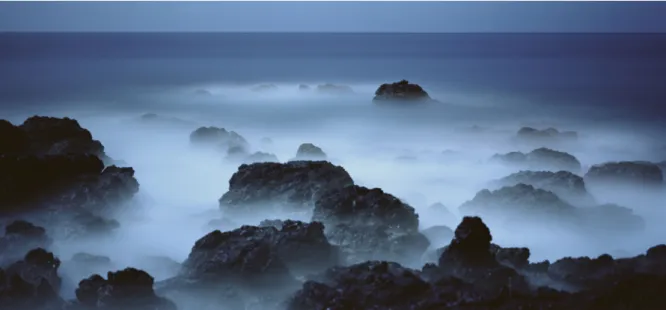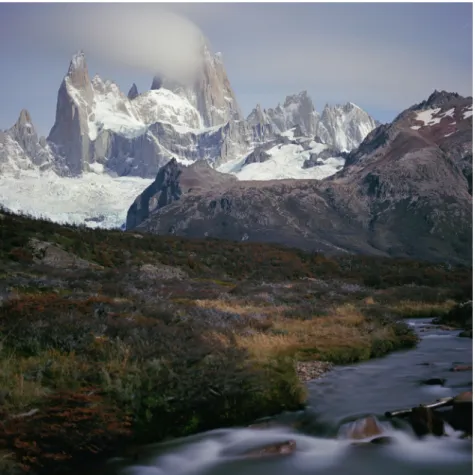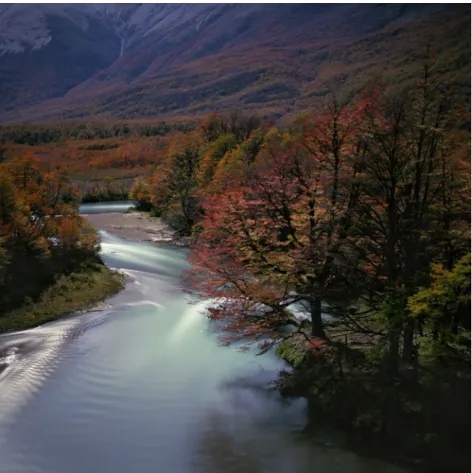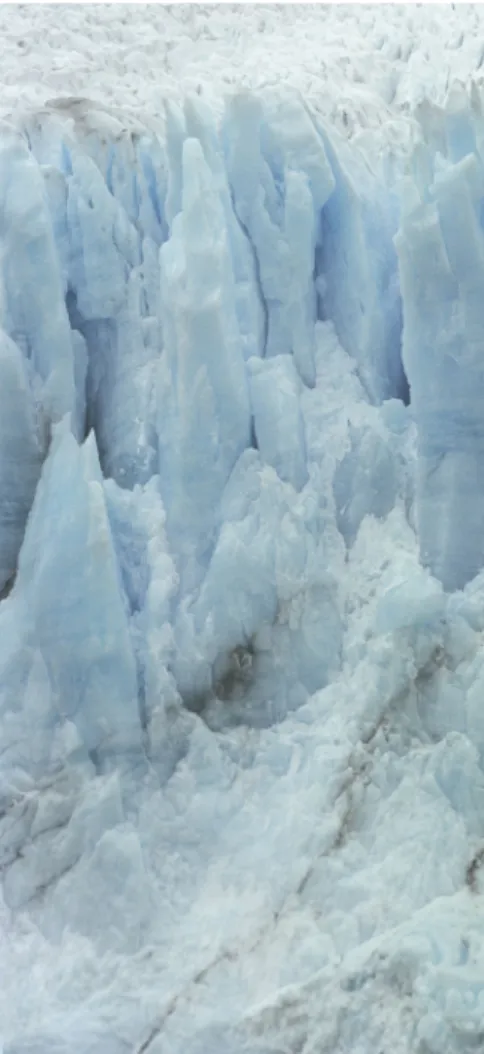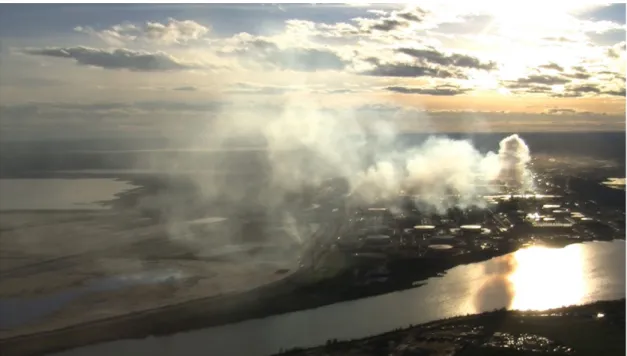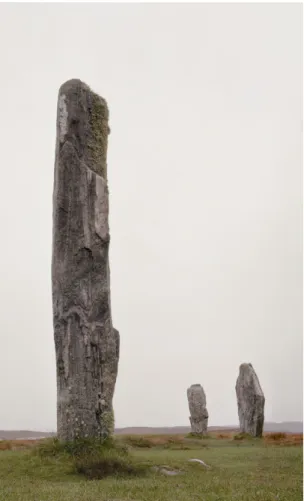Photography at the End of the World
On Darren Almond’s Fullmoon Series
1T.J. Demos
Abstract:
This essay examines the Fullmoon photographs of London-based artist Darren Almond and puts them in relation to speculative realist philosophy (that of Timothy Morton and Bruno Latour), which claims that we are living in a post-natural condition. As such, Almond’s work, which is also productively compared to the photography and video of related artists such as Ursula Biemann and Subhankar Banerjee, shows the conceptual end of the category “world,” which has dominated philosophies of nature since the beginning of the Enlightenment. The essay inquires into the aesthetic and political dimensions of this ecological transformation and the fraught images that mediate and negotiate it.
Résumé:
Cet essai examine les photographies de la série Fullmoon de l’artiste Darren Almond et les met en relation avec la philosophie du réalisme spéculatif (de Timothy Morton et de Bruno Latour) qui affirme que nous vivons dans une condition post-naturelle. Le travail d’Almond, efficacement comparé aux photographies et aux vidéos d’artistes œuvrant dans la même veine tels qu’Ursula Biemann et Subhankar Banerjee, montre la fin conceptuelle de la catégorie « monde » qui dominait les philosophies de la nature depuis le début du Siècle des Lumières. L’essai nous plonge dans les dimensions esthétiques et politiques de cette transformation écologique ainsi que dans les « fraught images » qui les relatent et les mettent en question.
Keywords:
photography; ecology; nature; speculative realism; landscape; philosophy
1. An earlier version of this essay appeared as T.J. Demos, “Photography at the End of the World,” Darren Almond (London: White Cube, 2014), 25-31.
Darren Almond’s Fullmoon@Cape Verde (2013) pictures a dreamscape of geological wonder. Eerie, dark volcanic crags emerge in a sea of fog, forming a liminal topography where it’s impossible to distinguish the thick atmosphere from the mysteriously still watery surrounds. In related images from the series of photographs taken on the Central Atlantic islands just off the coast of Senegal, the hallucinogenic glow of bluish calm sets off the distant mountain formations in startling passages of environmental marvel. At first glance, these photographs are entrances into the wilds, conjuring its uncivilized, savage, and barbarous connotations—the complete other, in other words, to the familiarity, order, and structure of human culture and technology—yet I hope to show they are anything but.
Fig 1. Darren Almond, Fullmoon@Cape Verde (2013)
Still, these pictures suggest some of the fascination Charles Darwin must have felt when he visited the islands, as the first port of call of the Beagle, commencing his historic voyage that serves as loose reference for Almond’s own recent travels to the ends of the world. The naturalist recorded his impressions in his Journal of Researches, published in 1839, which Almond read during his own trip south. In it, Darwin described Cape Verde as “an utterly sterile land,” especially to “any one accustomed only to an English landscape,” but one that nonetheless possesses “a beauty totally unexpected, from the prevalent gloomy character of the rest of the island [...] bounded by lofty and jagged walls of stratified lava.”2 One can
certainly perceive some of that gloomy grandeur and the sterile land’s surprising beauty in Almond’s entrancing representations.
Fig 2: Darren Almond, Fullmoon@ Cerro Chaltén (2013)
Also included in Almond’s recent exhibition at White Cube gallery in London were photographs from the series To Leave a Light Impression, portraying the mountains and valleys of Patagonia, the site of a subsequent stop of the Beagle, and for Almond in turn. One image, Fullmoon@ Cerro Chaltén (2013), depicts the jagged outline of Monte Fitz Roy, located in the Southern Patagonian Ice Field, near the border between Chile and Argentina. Named after the Beagle’s captain, the mountain is striking for its uncanny visual qualities. In this and other images taken in the Patagonian region, the representations’ estrangement-effect owes to the way the water appears stilled, absent of the defining ripples and liquid textures one would normally expect in such a landscape photograph. Similarly, the clouds are blurred together, without any of the hard edges that would otherwise articulate their discrete shapes. As well, the vibrant chromatic range seems unexpectedly intense, particularly the way the autumnal reds and brownish yellows are set against the jarring turquoise of the oddly motionless flow of the Rio Baker. The photograph shows a nature estranged, as if glimpsing a parallel reality only vaguely resembling our own, which, for Darwin, pertained to “a country completely unknown” near “the end of the world.”3
Fig 3. Darren Almond, Fullmoon@The River of Turns (2013)
Of course the reason for this extraordinary aesthetic sensibility is that these photographs, as hinted in Almond’s titles, were taken in the middle of the night, with the landscapes bathed only in the light of the full moon. Using exposure times of between twelve and ninety minutes (depending on the extent of cloud cover), the artist employs large format Hasselblad cameras and lenses with Kodak film, with images printed from digitally-scanned negatives after visual noise has been removed from the files.4 Almond’s
photography is essentially analog—there is no digital manipulation or artificial processing—and it is one of duration, as if the expanded footage of a video were collapsed into a single image. It is this approach that explains the peculiar illumination in these images, and the odd way light interacts with matter, creating a sense of extreme artifice, as when stars are shown as white lines mysteriously streaking across the sky. It’s as if we’re looking at amazingly detailed, but weirdly flattened out naturalist dioramas.
In some ways, Almond’s approach returns us to the laboratory origins of the photographic medium, when early technology necessitated protracted exposures to capture images of the visible world, and where, consequently, environmental movements were rendered imperceptible, or made visible in an unfamiliar way—as when the moon shifts orbit over the course of Almond’s exposure, creating a visual effect that softens the edges of objects, blurs clouds, and merges waves into a seamless surface. Consider, for instance, the images of American photographer John Whipple, who took perhaps the earliest daguerreotype images of the moon and astral bodies from Harvard College Observatory in Cambridge around 1852, appearing now as almost abstract painterly compositions owing to the photographs’ discoloration over time. As well, given his recurrent choice of pastoral subjects, Almond’s full-moon images, which he began taking in 1998, recall a history of landscape painting, a reference reinforced by the fact that he commenced the series by photographing places such as Cézanne’s Mont Sainte Victoire, Constable’s Flatford Mill in Suffolk, and areas where Casper David Friedrich and John Ruskin gained inspiration. In addition, Almond has retraced places where early photographers like William Henry Fox Talbot and Carleton Watkins worked. As the artist has explained, his full-moon photographs “are intentionally concerned with memory and chance, with mobilising light and time, and, in the choice of locations—zones outside the urban, untouched by artificial lighting—continuing the legacy of Romantic painting.”5
Given these diverse references, coupled with the hyper-intense appearances of Almond’s landscapes, it’s not surprising to find in writings on Almond’s work an appeal to the Romantic aesthetics of the sublime.6 For certain, these images of far-flung geographies and extreme geological formations
resonate with Edmund Burke’s awe-inspiring experience of what surpasses perception, and Immanuel Kant’s writings on the boundlessness of nature that exceeds human comprehension. The shared focus on beautiful, awesome natural areas as “zones outside the urban, untouched by artificial lighting” certainly justifies that comparison. Yet the linkage also misses a significant philosophical discrepancy, as well as the historical rupture, between the two, a disjunction that marks Almond’s practice as something altogether different, and rather appropriate to our own post-Enlightenment era founded on the complete 4. Almond, email communication with the author, 27 June 2014.
5. Darren Almond, quoted in Darren Almond: 50 Moons at a Time (Koln: K21 Verlag der Buchhandlung, Walter Konig, 2005), n.p.
6. See Brian Dillon, “The Black Mirror,” in Moons of the Lapetus Ocean (London: White Cube, 2008), esp. v, vi, vii.
eradication of anything like an outside, or beyond, to the human realm. If the Romantic sublime took nature as ultimate aesthetic object, then in Almond’s work, we confront a landscape photography that, in perhaps its most bizarre aspect, is without nature.
Of course this doesn’t mean that there are no mountains, streams, valleys, glaciers, and trees in Almond’s photography. Rather, it’s that “nature” no longer exists as an isolated, pure category untouched by human activities, as it once was imagined (even if that imagination was always somewhat of an illusion), which indicates no less than a paradigm shift in conceptual thought, and an expression of our current fraught relation to the outside world. What tips us off, first of all, is that Almond’s images are not what they seem—transparent to an exterior referent, as if referring to something out there, captured at a precise moment. Instead, they deliver the artificiality of photography itself, recording visual effects that human perception could never experience as such without the aid of prosthetic technology. (In some ways, the full moon photography realizes the inverse of his early work, A Real Time Piece [1996], the real-time video projection of the artist’s studio, which appeared largely static, save the shadows moving slowly across the floor, over twenty-four hours, a period beyond the attention span of human vision.)7 In
other words, Almond’s full-moon pictures represent nature as thoroughly technologized, compressing an extended duration of time into a single image, with the effect resembling something we might once have called “nature,” but in fact defining an allusive object unavailable to human perception (which makes all the more sense that these images are revealed only in nocturnal darkness).
Fig 5. Darren Almond, Fullmoon@Quelat (2013)
7. Jean-Charles Vergne describes the piece as a “double impossibility of seeing,” in “...between here and the surface of the moon,” Darren Almond: Between Here and the Surface of the Moon (Clermont-Ferrand and Sotteville-lès-Rouen: FRAC Auvergne and FRAC Haute-Normandie, 2011), 76.
More than simply dissolving the distinction between nature and culture on the representational register, Almond’s photography draws our attention to “natures” that are already thoroughly hybrid and devoid of the wilderness discovered by Darwin. These might be called nature-fictions, the very strangeness of which betrays their non-identity to themselves. Consider Fullmoon@Quelat (2013), taken in Chile’s Quelat National Park, showing a distant glacier lodged between two mountains, from which descends a waterfall. Far from untouched wilderness, the scene of glacial melting shows a geology beholden to global warming, and as such its nature is intertwined with modern fossil-fuel capitalism (just as the Cape Verde images show low-lying topographies threatened with the climate change of rising seas). In addition, its protected status as a “national park” makes it, in part, an effect of legal systems, economic calculations, and bureaucratic policies. Likewise, Present Form Exposed (2013), a triptych of close-ups of blue ice seen through the deep cracks in a glacier, discloses geological forms—including invisible subatomic particles called neutrinos originating from outside the solar system lodged in never-before-seen ice— whose very state of cracking and melting similarly owes to recent anthropogenic environmental change.8
Fig 6. Darren Almond, Present Form Exposed, (2013)
8. See Kenneth Chang, “An Icy Observatory Detects Neutrinos From Far, Far Away,” The New York Times (November 21, 2013). Thanks to the artist for this reference.
In other images from the Patagonia series, we see the glassy blue Rio Baker, which is also the visual face of a complex and shifting finance-scape. Chile is currently considering, with great controversy, selling the right to build a series of dams on this river to the State Grid Corporation of China, creating a multi-billion dollar megaproject of geo-engineering to bolster the country’s electrical grid. Or take the site of the future Patagonia National Park, the location of several of Almond’s pictures, which is being developed by billionaire philanthropists Doug Tompkins (founder of The North Face and Esprit clothing corporations) and his wife, Kristine (former CEO of outdoor gear company, Patagonia). Set on a 300-square mile area of former cattle-ranching land, the park will be dedicated to protecting the natural area and its wildlife, and promoting ecotourism in the Aysen region. If Almond’s landscapes conform to a visuality of “nature” that correlates—even if distantly—with earlier art historical depictions, they also differ in revealing the irrevocable cascade of earth into the global networks of contemporary science, law, and economy, as well as online databases and Internet systems, as signaled by Almond’s use of the character “@,” a stamp of the age of new media.
Almond’s work does suggest a moonlit primordial world seemingly untouched by human activity—think of his Moons of the Iapetus Ocean photographs (2007), alluding to the Paleozoic ocean of around 500 million years ago that would later become the Atlantic. Yet it also portrays a “geologic now,” as Elizabeth Ellsworth and Jamie Kruse describe it—that is, “a teeming assemblage of exchange and interaction among the bio, geo, cosmo, socio, political, legal, economic, strategic, and imaginary.”9
For example, his photographs of the dark forests and river rapids of Tasmania depict an island close to being half nature reserve, including shots of Blue Gum trees, which as a quickly growing eucalyptus variety, have been transplanted to Europe and North American with unforeseen effects. These trees were introduced in the nineteenth century to California to provide resources for railroad construction, building, and fuel, and have since wrought environmental havoc on the native habitat and its species.10
As haunting images, Almond’s portrayals show landscapes that have long since entered the migrant geographies, legal territories, and geo-engineering projects of global modernity.
The strange visuality of these photographs, their seeming artificiality and uncanny quality, betrays, I would suggest, a nature no longer available to us conceptually, experientially, and physically, as it once was. Rather, the images unleash the affects of a nature now outmoded, including the longings and nostalgia for an untouched environment, as well the critical recognition of the distance and foreclosure of that now outdated mirage. They do so insofar as the images are less representations of the complex networks of exchange and interaction within the heterogeneous assemblages of the geological now, and more a bringing into focus of “nature” as it recedes into a simulacral construction that is inextricable from human systems, becoming an effect of culture, economy, and technology. In other words, the aesthetic strangeness of Almond’s landscapes translates the sensibility that arises when our attachment to an erstwhile nature is dissolved.
In this regard, these photographs invite us to consider what Bruno Latour calls the “politics of 9. Elizabeth Ellsworth and Jamie Kruse, eds., Making the Geologic Now: Responses to Material Conditions of Contemporary Life (Brooklyn, NY: Punctum, 2012), 23.
10. See Teisha Rowland, “How the Eucalyptus Came to California: A Cautionary Tale,” The Independent (Saturday, January 15, 2011), www.independent.com/news/2011/jan/15/how-eucalyptus-came-california/.
nature,” which “is always manifested, in practice, by the destruction of the idea of nature.”11 Political
ecology, for Latour, conceptualizes the world as a post-anthropocentric collection of human and non-human agents, like the teeming assemblage of the geologic now. As such, it removes the security of our relation to nature, as “nothing, precisely, can naturalize any longer”—that is, be taken for granted, or understood in isolation. The earlier assumptions of risk-free objects that were once defined as “matters of fact” in regards to a nature “out there,” have given way to precarious attachments and entangled objects, becoming “matters of concern” that implicate us “in here,” leaving us with fraught images that give rise to a crisis of objectivity. Even when we try to protect nature, whether from industrial exploitation or via legal preservation, we only entangle the world even more intimately in human systems.12
So what comes after the end of nature? For eco-literary theorist Timothy Morton, building on Latour’s speculative realism, “ecology without nature” allows us to focus on “hyperobjects,” assemblages that are massively distributed in time and space, such as global warming, which extends hundreds of thousands of years into the future, or neutrinos that travel to us from supernova explosions of stars outside our solar system possibly 165,000 light years away, which takes advanced technology to detect. These phenomena are so vast and long-lasting that they “defy human time and spatial scales”; in addition, they are wrapped up in hybrid bio-geo-technological systems.13 For Morton, once we
move beyond the outmoded paradigm of nature as an isolated category separate from human culture, and see the distributions of hyperobjects in its place, we face the problem of representation. For such complexities exceed the framed objectification of “landscape painting”—the artistic approximation of the philosophical idealism that has reigned for the last few centuries. With current post-natural entanglements, we experience “the end of the aesthetic idea of ‘world’ as an environing, distancing and distanced horizon.”14 What is left after its disappearance is profoundly uncanny and strange—a world
suddenly deflated of reality, a humanity expanded without reserve, one that cannot be captured in an artistic frame.
It is this denaturalized nature that, in my view, Almond’s photography glimpses, one quite different from that imagined in Romanticism or during Darwin’s explorations of the far reaches of the world. In this sense, his work suggests something quite distinct from the construction of a neo-pictorialist photography or an aesthetics of the neo-Romantic sublime (for example, as imaged in the digitally-manipulated works of Andreas Gursky or Jeff Wall, these being more attuned to a postmodern critique of representation than Almond’s investigation of the politics of nature).15 Rather, insofar as
such Romantic natures are referenced in Almond’s work, they appear as an outmoded foil, which helps make evident the conceptual—even ontological—paradigm shift that his photography participates in and singularly develops. This approach provides one answer to the aesthetic imaging of hyperobjects— 11. Bruno Latour, Politics of Nature: How to Bring the Sciences into Democracy, trans. Catherine Porter (Cambridge, Mass.: Harvard University Press, 2004), 25.
12. See Latour, Politics of Nature, esp. 21-25.
13. Timothy Morton, “Zero Landscapes in the Time of Hyperobjects,” Graz Architectural Magazine 7 (2011), 80. 14. Morton, “Zero Landscapes in the Time of Hyperobjects,” 87.
15. Of course it was during postmodernism that the separation between nature and culture was definitively made; today, the difference is that cultural investigations appear less occupied with the critique of perception and more with the post-natural inquiry into so-called object-oriented ontology and speculative realism.
to show the estrangement of “nature” as an aesthetic category, and elicit, in a necessarily fragmentary way, the complex hybrid forms and interconnections that now stand in its place.
Fig. 7. Subhankar Banerjee, Caribou Tracks on Coal Seams II, from the series Coal and the Caribou (2006)
In this vein, Almond’s work participates in a larger formation of photographic—and more broadly, video-based—practices that have taken up the post-natural condition in recent years. One can see various traces of this formation in the work of diverse artists, such as the photographs of Subhankar Banerjee and his images of the nature-culture landscapes of the far North, as in his series Coal and Caribou (2006), which records the interlacing trajectories of coal seams and animal tracks on the ground in the Western Arctic. Banerjee’s expansive captions add an analytic frame to his images, as befits a photographer who is also an environmental activist: “Only from air can one grasp the magnitude of the devastation, with dark craters and huge black ponds filled with a toxic byproduct called coal slurry. In the Utukok Upland it is not an issue of aesthetic, but ecology, as these vast caribou herd use this area both for calving and post calving aggregation.” Or consider Ursula Biemann’s Deep Weather (2013), a video-essay project that investigates the degraded landscapes of the Athabasca River region in Alberta, Canada, an area of fragile biodiversity invaded recently by the Tar Sands oil extraction industry. In the second part of this nearly nine-minute video, Biemann pairs aerial overviews of the Tar Sands with subsequent footage of Bangladesh’s threatened delta, where multitudes of people are shown carrying out a massive
geo-engineering project, buttressing the coastline with sandbags to protect against rising seas and thereby forming what is a new kind of human-made nature (compensating for a human-destroyed one).16
Fig. 8. Ursula Biemann, still from Deep Weather (2013)
Grappling with such complexities, Almond’s photographs of unnatural natures similarly define a reflective space of aesthetic contemplation in which to consider expanded temporal durations, multifaceted geological networks, and newly constructed natures. Like Biemann’s and Banerjee’s work, they offer a set of propositions with which to consider what “nature” has become in the age of the anthropocene, signaling a new geological era, beginning in the 18th-century with the inauguration of the industrial revolution, when human activities became, for the first time in history, the central driver of the transformation of the earth’s ecosystem.17 (The term is also one that Almond has explicitly referenced with
his work Anthropocene: The Prelude (2010), a three-screen film installation that portrays environmental conditions around the frozen Yenisei River near Norilsk, one-time Soviet gulag and ongoing site of nickel mining.)
16. For more discussion of such practice, see T.J. Demos, “The Post-Natural Condition: Art after Nature,” Artforum (April 2012), 191-97; T.J. Demos, “Decolonizing Nature: Making the World Matter,” World of Matter, ed. Inke Arns (Berlin and Dortmund: Sternberg Press and Hartware MedienKunstVerein, forthcoming).
17. The term anthropocene, coined by ecologist Eugene Stoermer, and popularized by atmospheric chemist Paul Crutzen, has been taken up in geological circles around 2000, and by the emerging field of environmental humanities (e.g. see “The Anthropocene Project,” the current research initiative of Haus der Kulturen der Welt in cooperation with the Max-Planck-Gesellschaft, Deutsches Museum, the Rachel Carson Center for Environment and Society, Munich and the Institute for Advanced Sustainability Studies, Potsdam). For its critical consideration in relation to imaging practices, see T.J. Demos, “Welcome to the Anthropocene,” Winterthur Fotomuseum blog, 2015, at: http://blog.fotomuseum.ch/author/tj-demos/.
Fig. 9. Darren Almond, Sia (2013)
This human-defined climate is certainly different from—but not totally unrelated to—the longstanding human desire to transform the local environment, as is evidenced in the prehistoric arrangement of Callanish Stones pictured in a further series of Almond’s, comprising many portraits of individual monoliths found on the west coast of Lewis island in the Outer Hebrides, just west of Scotland. These stones, titled by Almond after cardinal numbers in Gaelic, were assembled and positioned approximately four thousand years ago, with some historians proposing that they constitute a modeling of a lunar clock obeying an eighteen-year cycle. Shot in daylight with overcast skies in order to bring out the subtle textures and individual details of the stones, these pictures form counterparts to Almond’s twelve bronze columns, which correspond to the respective weight of the twelve astronauts who have thus far walked on the moon—an ongoing metaphor and structuring device in Almond’s work. Minimalist geometrical forms, these cylinders figure as sculptural additions to what becomes a conceptual assemblage that tells a human-lunar history, wherein the moon serves as organizing matrix for Almond’s work, opening up an entirely different way of looking at the world. These sculptures become pendants to a dark ecology of visibility that illuminates the gradual envelopment of nature by human culture and technology. For if these prehistoric standing stones constitute an early form of geo-engineering, built on Lewis island’s rock formations that, at 3.5 billion years old, are some of the oldest on earth (and further hyperobjects of extra-human geological time), then the reference to space travel points to recent technological developments on a vastly larger scale that have irrevocably joined earth’s environment to human activity.
Fig. 10. Darren Almond, Apollo 11, 12, 14, 15, 16, and 17 (2013)
Photography at the end of the world brings into relief the surprising shortness of humanity’s lifespan, as compared to geological time, even while it can highlight the momentous impact humans have had on their environment to date. In this regard, these photographs (and videos) propose an aesthetic revealing of geological complexity, offering conceptual insight into shifting categories of nature, which presents us with a final ethico-political query—how to relate to, and inhabit, this new post-natural condition? How to live at a time when our realization of the depth of our intertwinement with the world both signifies the end of the world’s conceptual identity, and parallels a growing environmental crisis never before experienced, leaving us with a world increasingly beyond recognition?
T.J. Demos is a cultural critic and professor in the Department of the History of Art and Visual Culture,
University of California, Santa Cruz, where he is also director of the Center for Creative Ecologies. He is the author of The Migrant Image: The Art and Politics of Documentary During Global Crisis (2013), and Return to the Postcolony: Spectres of Colonialism in Contemporary Art (2013). He is currently finishing a new book, entitled Decolonizing Nature: Contemporary Art and Political Ecology, to appear via Sternberg Press in later 2015.
